Phosphoric Acid Rust Bath: Use, Process, and Safety
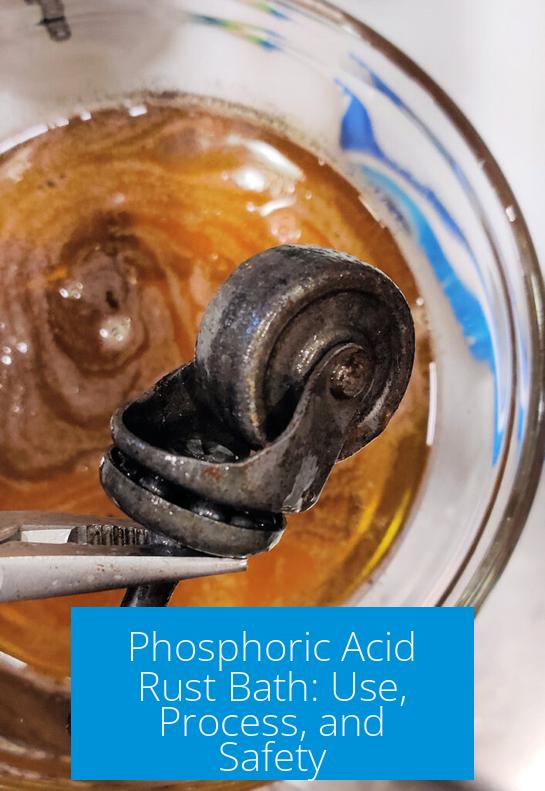
Phosphoric acid rust bath effectively removes rust and forms a protective phosphate coating on metal parts when used properly in controlled industrial settings. A single tank with pure phosphoric acid is insufficient for thorough cleaning or coating. Instead, a sequence of cleaning and rinsing baths precedes the phosphate treatment in industry.
Industrial Cleaning Process
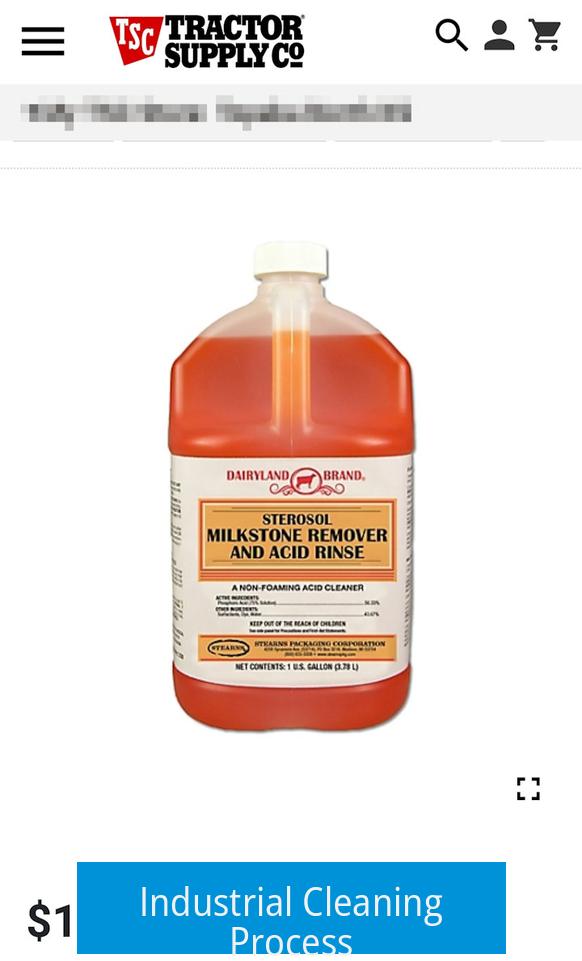
Typically, metal parts undergo several stages before phosphoric acid treatment:
- Degreasing: Parts enter a hot caustic or soap bath to remove oils, grease, and machining chips.
- Rinsing: Multiple rinses follow the degreasing step.
- Neutralization: A hydrochloric acid dip neutralizes residual caustic on the parts.
- Phosphate Coating: The clean parts soak in a hot zinc or manganese phosphate solution.
- Drying: Several rinses after phosphate coating, then drying in hot air or hanging to dry.
- Painting: The phosphate layer acts as an adherent base for primer and paint.
This multi-step setup produces a tough crystalline phosphate film. In contrast, soaking directly in concentrated phosphoric acid (common in rust baths) lacks cleaning and coating stages. This can be ineffective or unsafe for items like weight plates.
Concentration and Handling
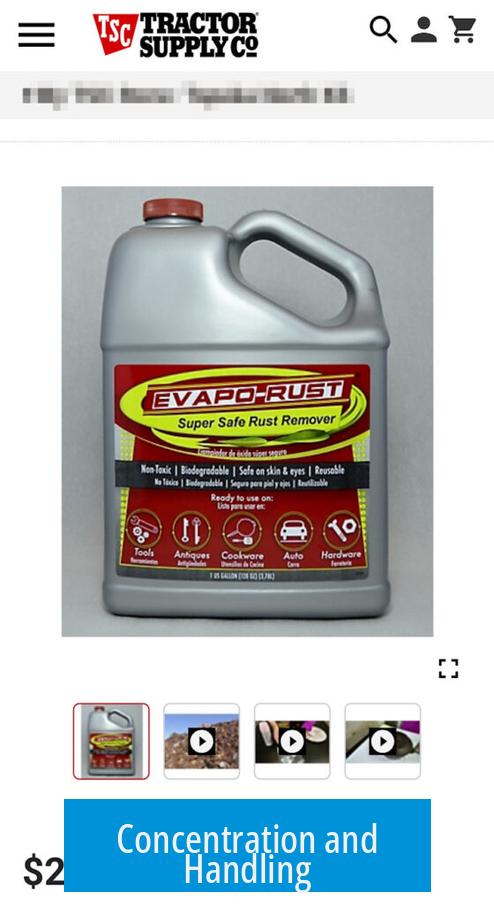
Common phosphoric acid products sold for metal prep typically contain about 45% phosphoric acid. Dilution to around 30% concentration is usual for rust removal. For example, mixing equal parts acid and water achieves roughly 50% of the product’s acid concentration.
Safety guidelines emphasize always adding acid to water to prevent splashing reactions. Phosphoric acid’s low volatility reduces inhalation risk, making plastic containers suitable for immersion. However, outdoor use or well-ventilated areas remain preferable.
Practical Usage Tips
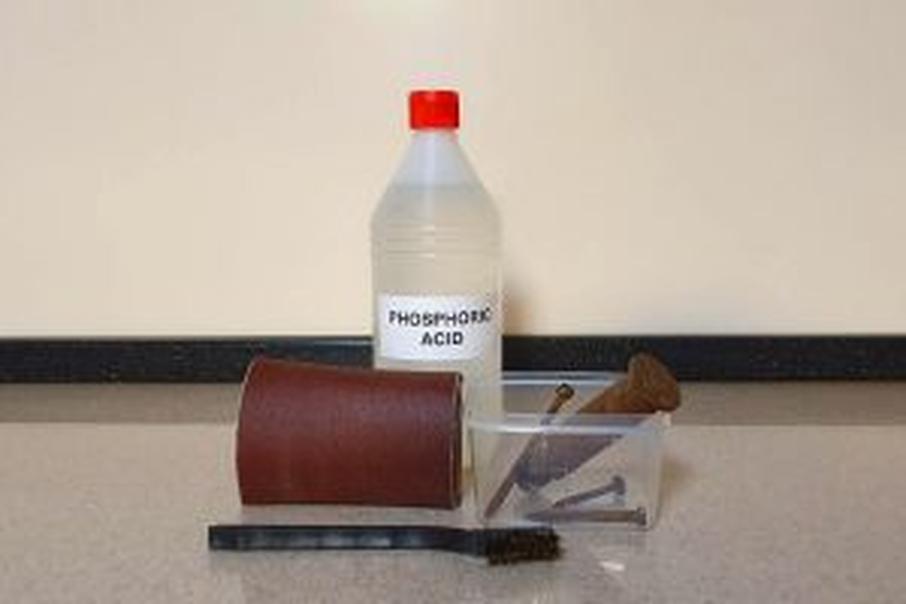
- Confirm tub material compatibility with phosphoric acid before use.
- Soaking parts overnight improves rust treatment effectiveness.
- Reuse of bath solution is limited; it’s best to replace spent acid rather than prolong use.
- Experiment with dilution and soak times on sample parts to optimize treatment.
- Alternatives like sanding and etching primers can sometimes be more practical for small-scale or one-off jobs.
Summary of Key Points
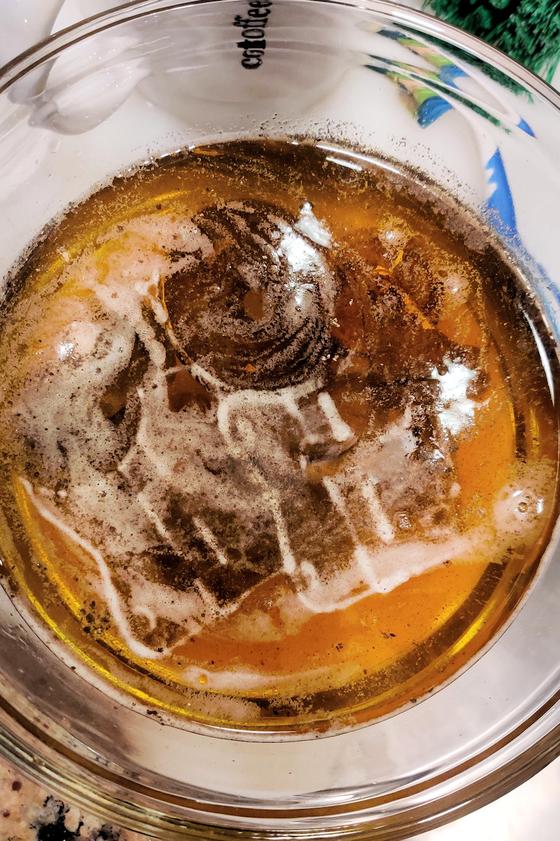
- Phosphoric acid rust baths require controlled concentration and pre-cleaning for best results.
- Industrial use involves multiple cleaning, neutralizing, and phosphate coating steps.
- Typical phosphoric acid concentration is around 45%, diluted as necessary for rust removal.
- Safety involves adding acid to water and preferably working in ventilated or outdoor areas.
- Replacing bath solution regularly avoids contamination and maintains performance.
The Truth About Phosphoric Acid Rust Bath: What Works, What Doesn’t, and How to Get It Right
Wondering if a phosphoric acid rust bath is your secret weapon against rust? The quick answer: yes, but not quite the way you probably imagine it. You might think dunking your rusty weight plates into a tub of straight phosphoric acid will magically clean and coat them with a protective phosphate layer. Spoiler alert: it’s not that simple, and usually, it’s not the best idea either.
Let’s unpack this rust-busting myth with some practical insight, science, and a splash of humor — because who said chemistry and cleaning can’t be entertaining?
Phosphoric Acid Rust Bath: What’s It Actually Good For?
Phosphoric acid is popular for removing rust thanks to its ability to convert iron oxide (rust) into a more stable iron phosphate compound. This crystalline phosphate coating can protect metal from further corrosion. Sounds like a dream, right?
But here’s the catch: you can’t just toss your rusty parts into a single phosphoric acid bath and expect a serious crystal fortress to form. That type of coating requires a precise industrial process involving multiple chemical baths and rinses to build up the tough crystalline layer effectively.
In the real world, home mechanics and hobbyists often skip the complex multi-step industrial process. Instead, a simple mechanical cleaning—like sanding or wire brushing—followed by an etching primer spray (which contains phosphoric acid!) usually does the trick.
How Does the Industrial Process Work?
Imagine a production line churning out metallic parts. Here’s their step-by-step routine for ultimate rust protection:
- Weights come fresh from machining — covered in chips, oils, and grease.
- They soak in a hot caustic/soap bath to get clean. Then rinse thoroughly.
- Next, a dip in hydrochloric acid neutralizes any leftover caustic residue.
- After another rinse, the parts plunge into a hot zinc or manganese phosphate soak.
- The phosphate bath builds a thick, tough crystalline coating, then more rinsing.
- Finally, drying happens via hanging or hot air before painting.
This multi-bath approach builds a proper phosphate layer. Trying to mimic this with one tank of phosphoric acid at home? You’re not going to get the same results. You can remove rust, yes. Build a phosphate fortress? Nope.
How Concentrated Should Your Phosphoric Acid Rust Bath Be?
If you peek at safety data sheets (SDS) for common store-bought phosphoric acid cleaners, you’ll find concentrations around 45% phosphoric acid. That’s your magic number.
This concentration is strong enough for rust removal and metal prep but stays manageable and safer when handled properly. Anything more concentrated might be overkill and more hazardous.
Safety First: Handling Phosphoric Acid at Home
Phosphoric acid is surprisingly tame compared to other acids — not very volatile or highly corrosive. That means you don’t have to suit up like you’re in a sci-fi lab. A plastic tub usually does the job—just confirm your tub manufacturer approves phosphoric acid contact.
However, always add acid to water, not the other way around—this prevents dangerous splashing and heat bursts. And, despite its safety, it’s best to do this outdoors or in a well-ventilated area. No one likes a “what’s that smell?” surprise inside the house.
Practical Tips for DIY Phosphoric Acid Baths
- Overnight soak is your friend. Give rust enough time to react. Quick dips won’t do much.
- Use fresh acid for each session. Reusing “spent” acid isn’t ideal unless you’re running a factory. For home projects, dispose responsibly and start fresh next time.
- Dilution is easy but critical. To get a 50% solution from a stronger stock (like 60%), mix equal parts acid and water. Remember: acid goes into water, not vice versa.
- Test your concentrations. Try soaking one plate at one concentration, another at a different level. Compare results before going all in.
Why Not Just Sand and Paint?
Many folks ask: “Why use phosphoric acid at all? Why not just sand rust off and slap on some etching primer?”
Great question. Mechanical cleaning combined with painting, especially with etching primers that contain phosphoric acid, can effectively stop rust and protect metal. It’s simpler, cheaper, and less hazardous than setting up chemical baths at home.
Unless you’re dealing with industrial volumes or specific phosphate coating needs, sanding and priming will likely tick all your boxes.
A Balanced Approach for Rust Removal and Protection
Phosphoric acid rust baths have their place, especially in industrial settings. But DIY enthusiasts should understand limitations before diving in headfirst.
If you want to experiment with phosphoric acid at home, follow these ground rules:
- Use store-bought phosphoric acid at about 45% concentration.
- Always handle acid safely, outdoors if possible.
- Use proper containers compatible with phosphoric acid.
- Soak overnight, then dispose of the acid properly.
- Combine with mechanical cleaning and painting for best results.
- Don’t expect a factory-grade phosphate coating from a single acid bath.
Final Thoughts: Is Phosphoric Acid Your Rust Solution?
If your goal is to remove rust safely and prep metal for paint, a phosphoric acid rust bath can be an effective tool when used thoughtfully. But don’t get dazzled by the notion that one tank will do everything.
Sometimes the simplest approach—sand, etching primer, paint—wins the race. Industrial phosphating processes are sophisticated for a reason. For most hobbyists and homeowners, phosphoric acid is best used as part of a system, not as a standalone magic potion.
So, next time you stare at those rusty weights or metal parts, ask yourself: Do I want a quick fix, or do I want to pretend I run a factory line? Your answer will point you to the right method.
What concentration of phosphoric acid should be used for a rust bath?
A 45% phosphoric acid solution is typical for rust removal. This matches most hardware store products and works effectively for building a phosphate coating.
Can I reuse phosphoric acid rust bath solution?
It’s best to change the acid after soaking a few items. Reusing it might reduce effectiveness, especially if you have a small batch volume.
Is it safe to use phosphoric acid inside the house?
Phosphoric acid is low in volatility and corrosiveness. However, using it outside is recommended for safety and ventilation.
Is soaking weights in pure phosphoric acid advisable?
Soaking directly in pure acid isn’t recommended. Industrial processes use multiple steps including cleaning, rinsing, and acid dips before phosphate coating.
How do I prepare the phosphoric acid solution for rust removal?
To dilute, mix equal parts acid and water for about 30% concentration. Always add acid to water to avoid splashing.
What pretreatment steps are used in an industrial rust removal process?
Weights are cleaned in a hot soap bath to remove grease, then rinsed, dipped in hydrochloric acid, rinsed again, and finally soaked in phosphate solution for coating.


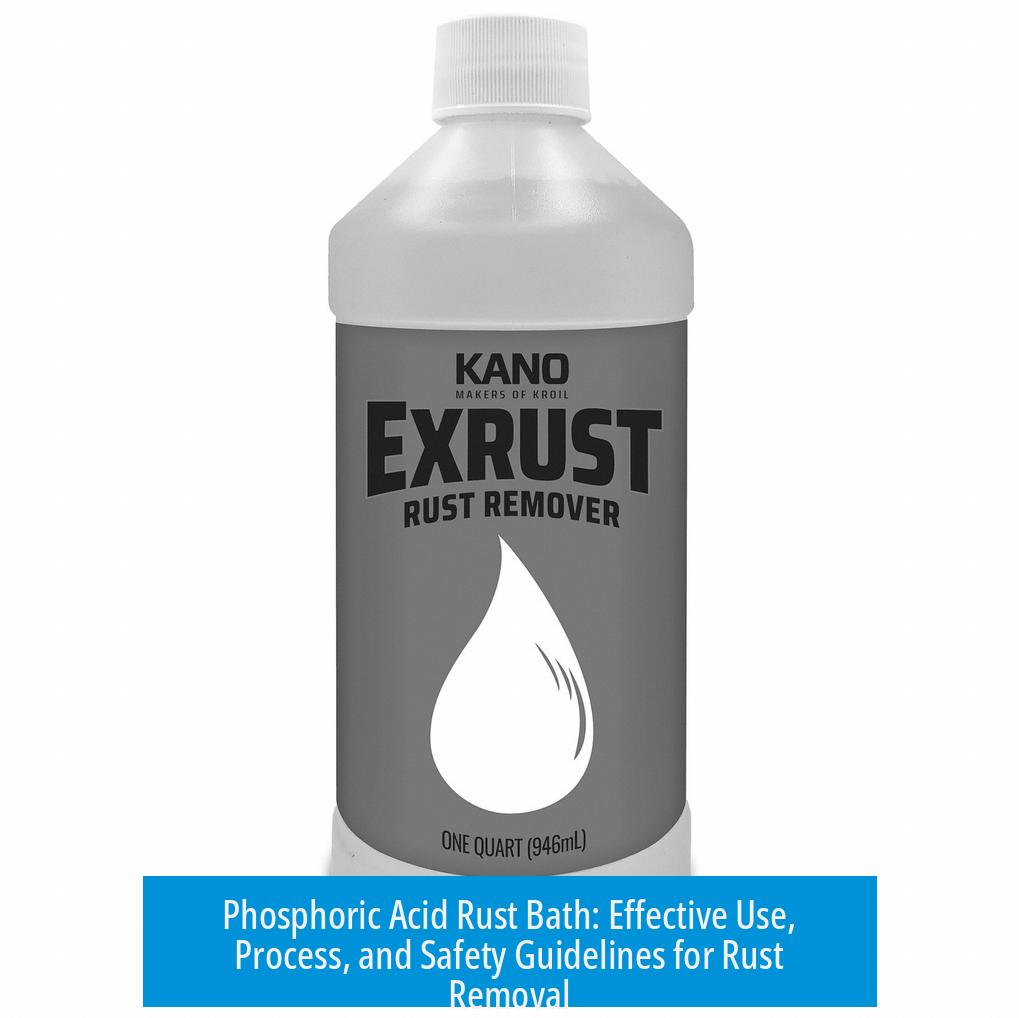
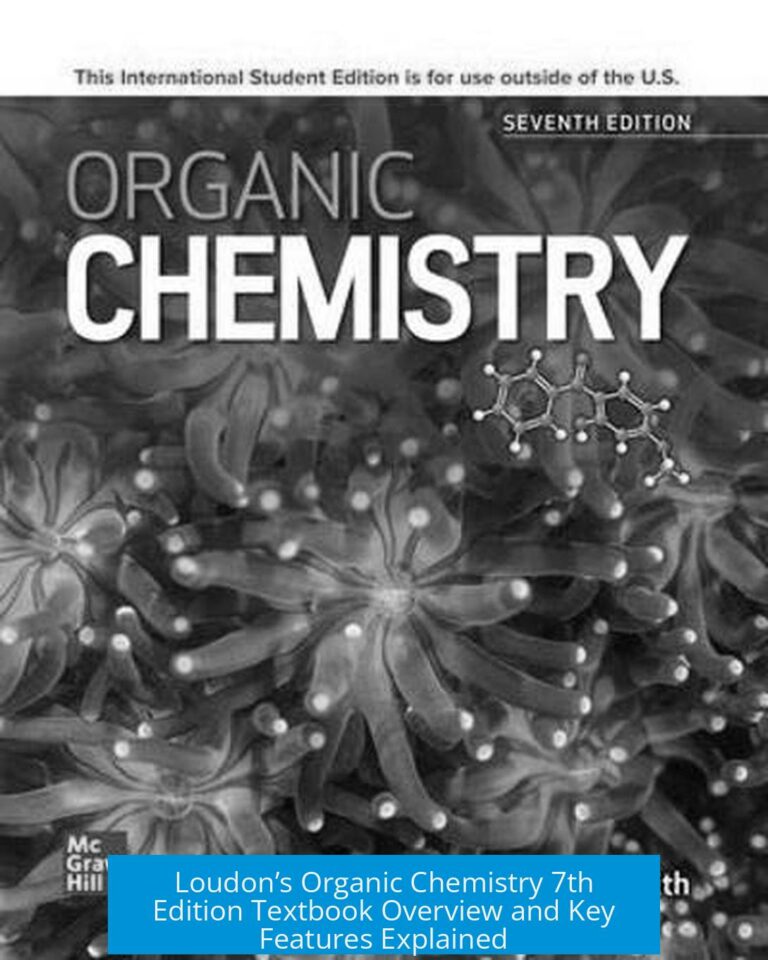

Leave a Comment